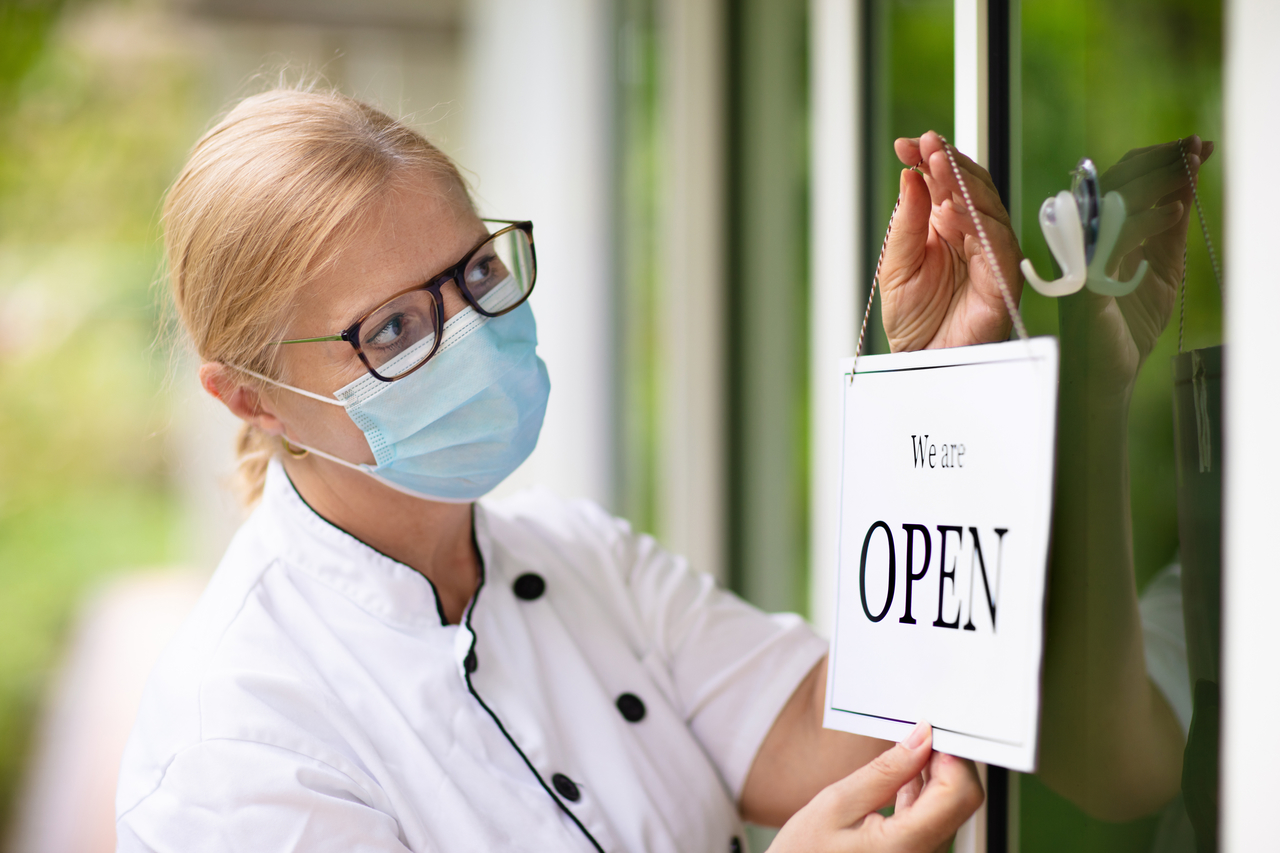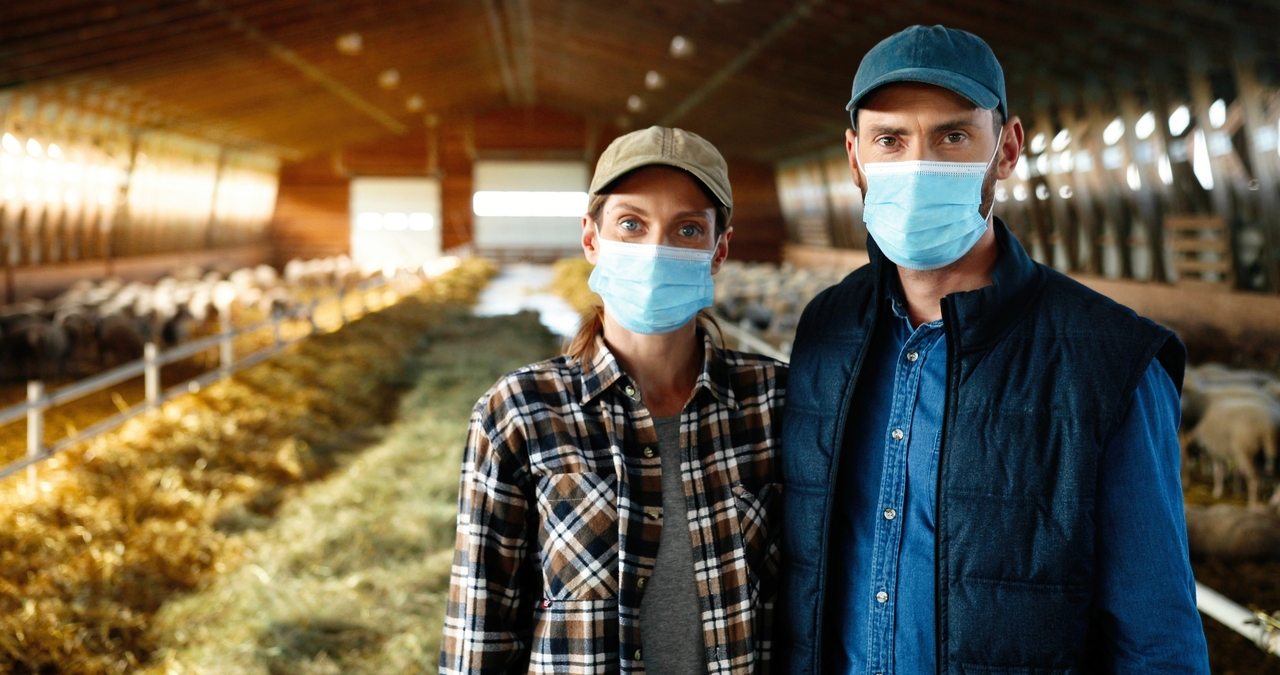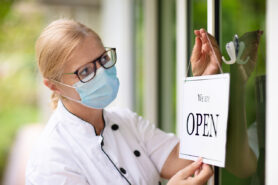Like It or Not, COVID is Changing the Landscape of Dentistry
- By: Brittany Bunn, Ifetayo Johnson, OPEN, Inc. Executive Director and Grace Linn, OPEN, Inc. Director of Communication and Marketing
- Date
With thanks to our content experts:
- Dr. Velton Robinson, DDS, Smile Connections
- Dr. Paul Glassman, DDS, Pacific Center for Dental Care
- Ms. Ann Battrell, Chief Executive Officer, American Dental Hygienist Association
“It was almost 4:00 PM and I was hurrying to my first dental appointment in over eight months,” Ifetayo (Ife) Johnson, Executive Director of the Oral Health Progress and Equity Network (OPEN) recalls. “I was almost seven months overdue for a good cleaning, and I was a little worried about a slight change in my bite. I called the dental office when I was about a mile away. ‘Smile Connection,’ the gentle voice of the receptionist filled the speakers in my car. I let her know that I would be a few minutes late, but I was very close.”
“Call us when you are in the parking lot,” she said.
“But I’m only a mile away,” I stated.
“Yes, call when you arrive,” she stressed.
“That seemed strange to me, but I followed the instructions, and two minutes later I called back. I was greeted with the formal instructions: ‘You can enter the building but take a seat at the end of the hall. I’ll be out to complete your questionnaire and take your temperature.’”
 What once was considered an anomaly has become the standard for a dental visit. The COVID-19 pandemic has forced healthcare providers and practitioners to rethink and reengineer their current health and safety protocols. Just as the HIV pandemic in the 80’s changed the course and landscape of the dental profession and resulted in the use of now standard gloves and masks by dentists and hygienists, COVID’s cascading impacts have gone far beyond the implementation of new safety measures for healthcare workers alone. Patients are also experiencing the burden of the pandemic as they access care — with many dental offices now requiring mandatory face coverings, temperature checks, and well-being assessments before patients are seen in-person.
What once was considered an anomaly has become the standard for a dental visit. The COVID-19 pandemic has forced healthcare providers and practitioners to rethink and reengineer their current health and safety protocols. Just as the HIV pandemic in the 80’s changed the course and landscape of the dental profession and resulted in the use of now standard gloves and masks by dentists and hygienists, COVID’s cascading impacts have gone far beyond the implementation of new safety measures for healthcare workers alone. Patients are also experiencing the burden of the pandemic as they access care — with many dental offices now requiring mandatory face coverings, temperature checks, and well-being assessments before patients are seen in-person.
Dr. Velton Robinson, a private practice dentist serving in metropolitan Detroit, Michigan, not only requires her patients to respond to a list of COVID questions, she requires it twice — once when they make the appointment and again when they get to the office. They also “have to rinse their mouth out…and then gear up in plastic wear” before she conducts their visit. Although she notes that plastic wear for patients has been fairly inexpensive, purchasing personal protective equipment (PPE) for staff, retooling of her practice, and implementing new technology (including multiple filters and machinery that catches the aerosols out of the air) has not.
With insurance companies refusing to pay for additional PPE dental providers are faced with difficult decisions such as how to offset added costs without negatively affecting their bottom lines. For some providers, like Dr. Robinson, the only viable option is to raise prices across the board “so that when you get it reimbursed [by the insurance company] for the procedure, then you get a little bit more money to cover for your PPE piece because you can’t charge the patient.” For many dental practices operating at only 80 percent of their capacity due to state mandates that option is not conducive to the survival of private practices.
Dr. Paul Glassman, founder and director for the Pacific Center for Special Care, notes that “most [dental practices] are small businesses that operate with high overhead.” It’s not unusual to have a dental practice have a 70 percent overhead, according to Dr. Glassman. “If you have a 70 percent overhead and you’re operating at 80 percent of your volume, your profit margin becomes very thin,” he says. “A lot of them are in trouble.”
Even with many providers scrambling to keep up with the backlog created during the few months that offices were closed, Dr. Glassman believes that once those backlogs are taken care of, “then practices are going to realize that a lot of them are not so economically viable.” So, what are private practices and dental providers to do as their bottom-lines continue to be threatened due to COVID? His solution — teledentistry.
According to the American TeleDentistry Association (ATDA), teledentistry is the “use of electronic information, imaging, and communication technologies—including interactive audio, video, data communications, and store and forward technologies to provide and support dental care delivery, diagnosis, consultation, treatment, transfer of dental information, and education.” It enables practitioners, including dental hygienists (who have also been heavily impacted by the sweeping domino effects of COVID) to “think differently about how we deliver oral health services to the country,” as Dr. Glassman explains.
 Gone are the days when a dental visit or “dental home” is limited to a physical office where patients are walking in and out of the door. Teledentistry allows dental providers and practitioners to expand their reach without incurring additional costs, such as PPE, theoretically making it a more affordable and accessible option for both patients and dental providers. But teledentistry does not completely eliminate all COVID-related cost, as there are some treatments that can only be done in-house. The savings that dentists realize when they reduce “the cost of care and increase efficiency through reduced travel times, shared professional staffing, and fewer in-person appointments,” as outlined by data provided by ATDA, “can positively affect private practices’ bottom line and staffing.” And the benefits to patients and communities because of increased access to care are significant.
Gone are the days when a dental visit or “dental home” is limited to a physical office where patients are walking in and out of the door. Teledentistry allows dental providers and practitioners to expand their reach without incurring additional costs, such as PPE, theoretically making it a more affordable and accessible option for both patients and dental providers. But teledentistry does not completely eliminate all COVID-related cost, as there are some treatments that can only be done in-house. The savings that dentists realize when they reduce “the cost of care and increase efficiency through reduced travel times, shared professional staffing, and fewer in-person appointments,” as outlined by data provided by ATDA, “can positively affect private practices’ bottom line and staffing.” And the benefits to patients and communities because of increased access to care are significant.
Ann Battrell, Chief Executive Officer of the American Dental Hygienist Association (ADHA) has witnessed first-hand that teledentistry can address some practice issues including staff turnover, those who leave the field due to the fear of contracting COVID, and lack of PPE. Teledentistry minimizes the risk of exposure to COVID-19 for both practitioners and patients and helps the dental team to focus on creating community-engaged dental care systems grounded in collaboration. “Depending on state law, [dental hygienists] can go out into the community and do a variety of procedures, particularly screening patients to assess their oral health status is and refer them to practices,” says Battrell. “If I’m a dentist, I can go into an agreement with multiple dental hygienists, who are deployed in the community and then have patients referred back to the dental practice for their dental restorative care.” The implementation of teledentistry is important to consider as a sustainable future business model; it is a universal truth that the “usual” doesn’t exist any longer.
It’s pretty clear that, like it or not, this is a new landscape for both providers and patients because of COVID. Practitioners grapple with concerns about managing the rising cost of PPE, a backlog of patients flooding back into offices, and an uptick in unexpected conditions like cracked teeth caused by poor “telework” posture and stress. Patients, especially those already disparately impacted by access to and affordability of care, are encountering changed spaces and protocols as they try to be healthy.
Sometimes, unexpected change is good. It can help to uncover systemic issues and needed adaptations. While both providers and patients will continue to face complex challenges as they navigate the new normal, Battrell believes that, “We’ve got to have courage, and we have to have faith that we’re going to get it done.”

 Subscribe To Our Communications
Subscribe To Our Communications